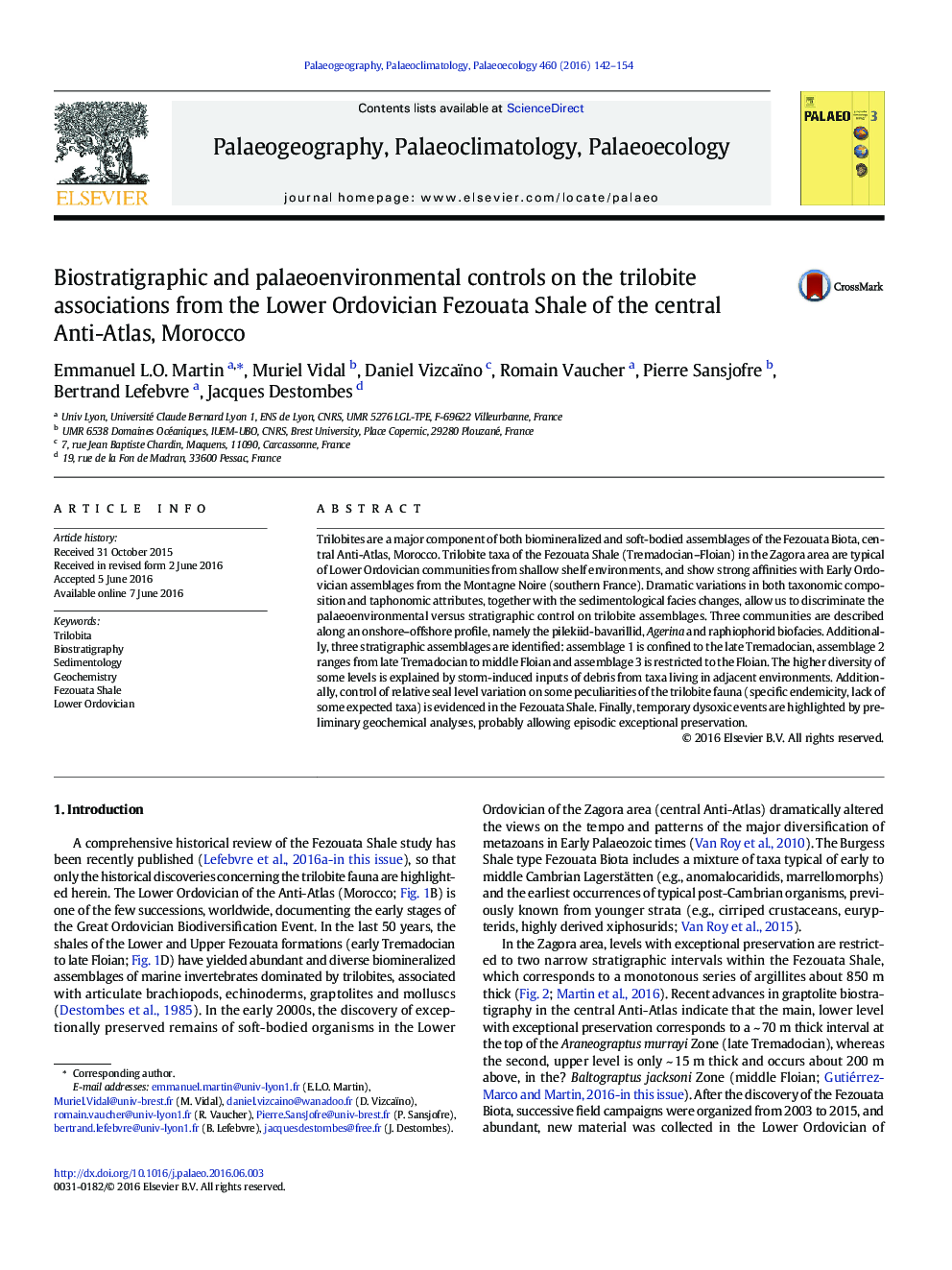| کد مقاله | کد نشریه | سال انتشار | مقاله انگلیسی | نسخه تمام متن |
|---|---|---|---|---|
| 4465569 | 1622131 | 2016 | 13 صفحه PDF | دانلود رایگان |

• Biostratigraphy of the 26 trilobites species from the Fezouata Shale is provided.
• Three biofacies are defined due to a depth control on assemblages.
• Effect of transport on communities is highlighted and discussed.
• Geochemical analyses suggest temporary more reduced and dysoxic conditions.
• Species of the Fezouata Shale display affinities with Montagne Noire (France).
Trilobites are a major component of both biomineralized and soft-bodied assemblages of the Fezouata Biota, central Anti-Atlas, Morocco. Trilobite taxa of the Fezouata Shale (Tremadocian–Floian) in the Zagora area are typical of Lower Ordovician communities from shallow shelf environments, and show strong affinities with Early Ordovician assemblages from the Montagne Noire (southern France). Dramatic variations in both taxonomic composition and taphonomic attributes, together with the sedimentological facies changes, allow us to discriminate the palaeoenvironmental versus stratigraphic control on trilobite assemblages. Three communities are described along an onshore–offshore profile, namely the pilekiid-bavarillid, Agerina and raphiophorid biofacies. Additionally, three stratigraphic assemblages are identified: assemblage 1 is confined to the late Tremadocian, assemblage 2 ranges from late Tremadocian to middle Floian and assemblage 3 is restricted to the Floian. The higher diversity of some levels is explained by storm-induced inputs of debris from taxa living in adjacent environments. Additionally, control of relative seal level variation on some peculiarities of the trilobite fauna (specific endemicity, lack of some expected taxa) is evidenced in the Fezouata Shale. Finally, temporary dysoxic events are highlighted by preliminary geochemical analyses, probably allowing episodic exceptional preservation.
Journal: Palaeogeography, Palaeoclimatology, Palaeoecology - Volume 460, 15 October 2016, Pages 142–154